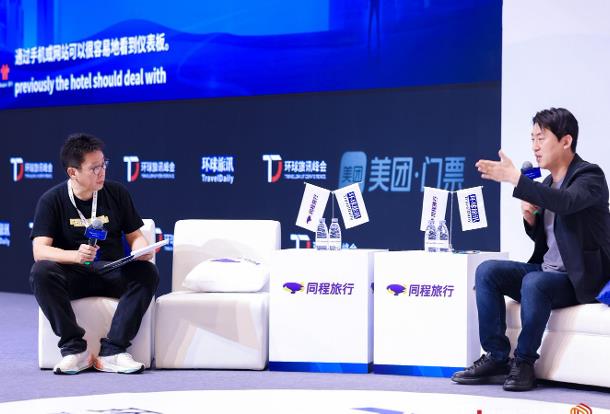ChinaTravelNews, Ritesh Gupta - Evaluating everything that a foreign hotel is doing to cater to the outbound travelers from China, content is one area that needs attention.
There are hotels that prepare for Chinese travelers staying at their hotels, for instance, offering Mandarin speaking services, Chinese-friendly front desk, offering Chinese tea and letting users pay via Alipay and WeChat. However, availability of tailored content or even a Chinese version of all the hotel’s offerings remains an issue from the travel distribution perspective.
At the same time, since more 3rd-party-hotel-distribution companies have popped-up in China, foreign hotels need to strengthen their content. Any intermediary would target most up-to-date static descriptive (details about hotel’s services, amenities, facilities etc.), dynamic content (rates etc.) and media content to display on their sites/platforms quickly and accurately during the booking process.
“Alibaba and Tencent have already worked out `entry points for travel’ within their respective sites. Technology has been streamlined so connectivity (for hotels’ availability, rates and inventory or ARI) isn’t an issue.” said an executive based in China. “Language is a significant factor (among Chinese travelers to take a decision regarding their hotel bookings). Foreign hotels need to look at areas such as room description, details about the property etc. Also, the B2B partners don’t work on localized content…if OTAs, wholesalers have to do the translation by themselves, it is a time-consuming initiative.”
Keeping pace with developments
Foreign hotel companies are looking at offering real-time room availability, rates and inventory on emerging options such as WeChat’s mini-program as well as the Meituan platform, in addition to Fliggy, Ctrip, Qunar, Mafengwo etc.
For instance, Pan Pacific Hotel Group (PPHG) has been strengthening its presence on Alibaba and WeChat, in addition to working with other intermediaries including Ctrip. The hotel company recently worked on its WeChat mini-program. “It (mini-program) provides travel guides and e-concierge services for Chinese users.” shared Cinn Tan, Chief Sales and Marketing Officer, PPHG. She also acknowledged that video content and live broadcast are trends that can’t be ignored.
“When a traveler is using one platform, and they don’t have to fill in any details for making a payment, hesitation is likely reduced which leads to a higher booking conversion.” states Rudy Ruan, Regional Business Development Director at DerbySoft.
For example, users re-visit Meituan several times a day, spending considerable time on the platform, and the cross-selling pattern is resulting in more hotel- and other travel-related transactions. Meituan sold over 200 million domestic hotel room nights in China last year, and foreign brands are noticing these bookings. Recently, Club Med worked out a multiple rate plan for all of their resorts, and any user can book any hotel room with different restrictions (such as number of people stay, kids age range) for Club Med via the Meituan Travel app. With the Club Med mini-program, WeChat users can search, book and make payments online to 16 Club Med resorts across China, Asia and Indian Oceans via the WeChat app. Both connections were worked out by DerbySoft.
Ruan added that per the feedback from online travel agencies and travel agencies, gathering foreign hotel’s content is still a hurdle. One challenge relates to the format a distributor needs content and the hotel companies having their content in a different format. So there is a need to “normalize” the content for a B2B partner to use it.
“Even today, for most of the Chinese travel companies, they end up loading hotel content manually or (relying on) input from the Excel file. We often are asked by distributors how to get a hotel’s content from the API connection. Distributors can get ARI data from an API connection, but for static information, such as hotel introductions, room descriptions, facilities, hotel contact, and the like, they will transfer with an Excel file, spreadsheet or another format offline. When distributors receive such information, they need to upload or input to their system (manually), it takes a long time to complete the same and there is a high cost.” explained Rudy, who added that to better meet the needs of the industry, DerbySoft has created a solution: MAX, a comprehensive content collection, management, and distribution platform for the hotel industry. “We collect hotel content in different formats to transfer, store and distribute the content through an API. This way, distributors end up accessing the hotel content of different hotel chains through one single API. Through a combination of standard and custom APIs, XML files, spreadsheets, and 3rd-party-interfaces, DerbySoft manages to secure the content that distributors need.”
An executive working with a global wholesaler mentioned that wholesalers have been focusing on their own point of sale in terms of enriching Chinese content i. e. trying to improve their HTML booking site with hotel description in Chinese language. The executive added that it isn’t their focus to work on areas such as videos of hotels, rather they can prefer outsourcing content from existing partners who have redistribution rights. “A wholesaler’s IT resource is predominantly focused on search and booking functionality while working with B2B partners in China. There are millions of searches a day. Video content is IT resource heavy and demands high store capacity plus wouldn’t be a cost effective option if a wholesaler has to shoot video, say for more than 20000 properties.”
For their part, hotels are working on their content for Chinese audience, but it seems priority as of now is to make the stay comfortable.
“China has unique requirements. It’s likely that properties are first being prepared (the staff, amenities etc.) to welcome the Chinese guests the way they wish to. No point in disappointing them and then getting bad reviews.” said an executive based in Asia. “Generally for our website, we can work with 3rd parties, for instance – embedding Google Maps, videos from YouTube etc. Such resources don’t work well in China. For our Chinese site, we altered our plan and started using maps from Baidu. Similarly, our team replaced Youtube with a local video hosting platform, Youku,” shared the executive.
The executive also added, “We go through a lengthy process of translating the content and this needs to be ready on the system as (B2B) partners pull via API connectivity. Along with rooms rates and availability, there is a need to send description, images and video of each room type. So we have localized our booking engine to show “bookable” features especially rooms. If this isn’t available, then the conversion rate could suffer. The virtual tours on our Chinese website have a complete “local feel”, they don’t look like adapted versions of original initiative. Similarly, there is an opportunity to show videos of breakfast, the Chinese staff which is there to serve outbound travellers from etc. Plus, local payment options such as Alipay, WeChat Pay etc. on our site further build better affiliation between Chinese travellers and our digital assets.”
Various delivery methods
There are several industry standards that are being used today to exchange a hotel’s content.
Hotel companies and B2B partners also need to assess the delivery method – the push or the pull method – be it for ARI or content. These methods have their benefits and shortcomings.
So in case of the push method, it entails direct publishing of content when it is changed at the source, or pushes changes in batches. The load on the publisher’s systems is entirely under their control and this is termed as the fastest method of updating content. This method is also favored to address the CRS capacity issues, but the data may not be quite as accurate when the booking is executed. Under the pull method, a hotel company has to handle large volumes of shopping messages from the ARI perspective. Also, the recipients request content from the hotel or the publisher. In case a B2B partner chooses the pull system, then it has to get the data and may have to face a corresponding lag in message response times.
“(For companies) to work in China, the biggest issue is the language. Second issue is technology – the Chinese market predominantly favors the push-based model as opposed to the pull-based model. So, basically, if one can’t support instantaneous delivery of rates, then you would typically fall behind the competition.” said Singapore-based Josh Ziegler, CEO, Zumata, a B2B travel technology company.
“In addition to featuring Chinese content in APIs, the speed and accuracy of these APIs also matters a lot. Chinese companies that use pull-based models often have sub-2-second cut-off time, which means anything that takes longer than 2 seconds will never make it into the result set. Price accuracy requirements are often in the 90%+ range, meaning rates can't change frequently beyond the initial search response. This is a high bar, and a difficult challenge to meet for companies leveraging only live pull-based systems.” mentioned Ziegler.




